In the animal world, standing out is serious business.
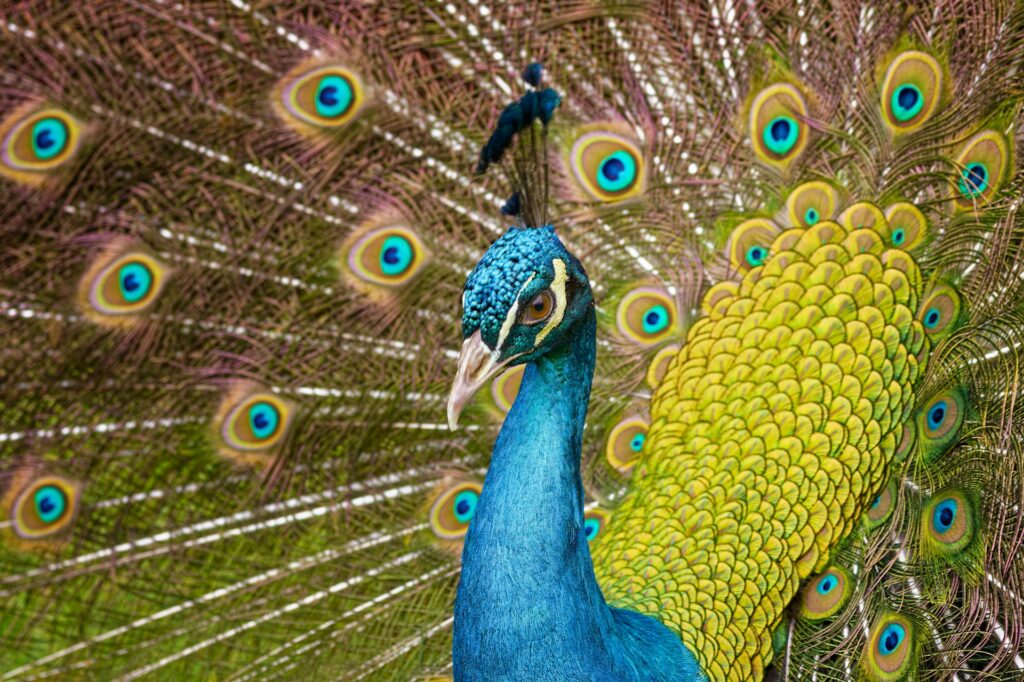
Whether it’s for attracting a mate, showing dominance, or just proving they’ve got something special, animals have come up with all kinds of strange, flashy, and surprisingly clever ways to make an impression. Some of it’s physical, some of it’s behavioural, and quite a bit of it puts us humans to shame. Because let’s face it: a bit of aftershave and a new haircut really can’t compete with half the things going on in the wild.
Bowerbirds build intricate homes decorated with found objects.
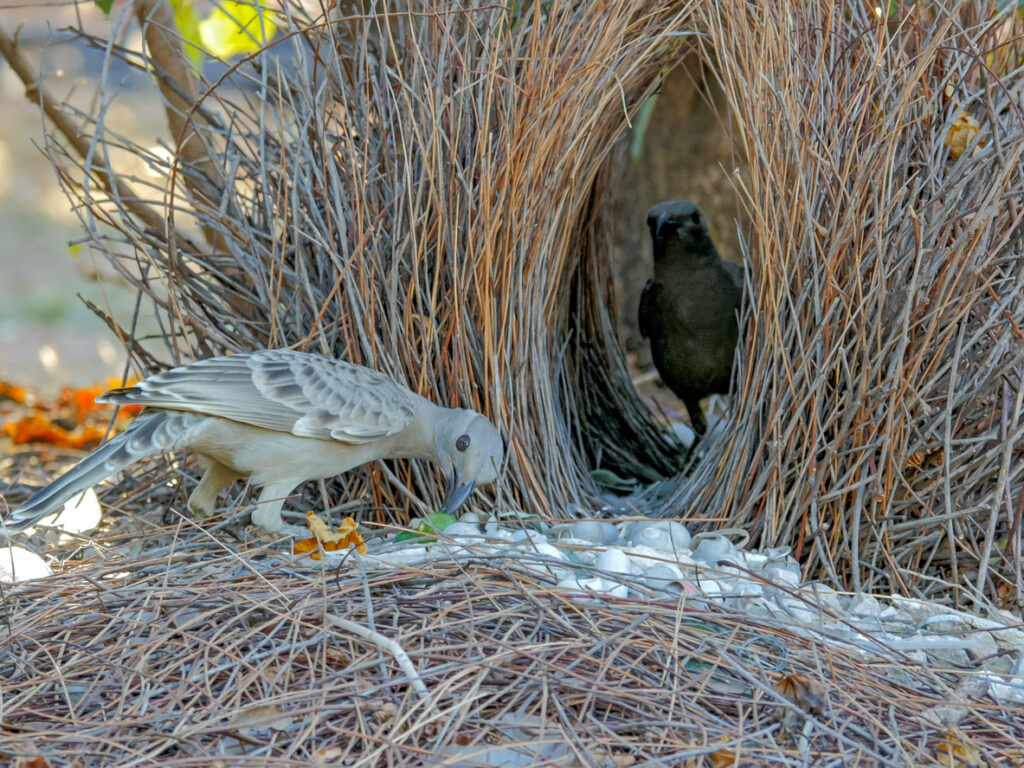
Male bowerbirds don’t just sing or strut to win over a partner. They build entire architectural displays called bowers—structures made of twigs, shaped into arches or platforms, and decorated with everything from berries to bottle caps. Some species even colour-code their collections, placing blue objects together or arranging items by size. It’s not a nest—it’s a statement. A bower that’s well-constructed and artfully designed shows the female that the male is resourceful, observant, and patient. Honestly, if humans decorated their houses to impress dates like this, estate agents would be out of work.
Peacocks fan out feathers in dazzling, iridescent displays.
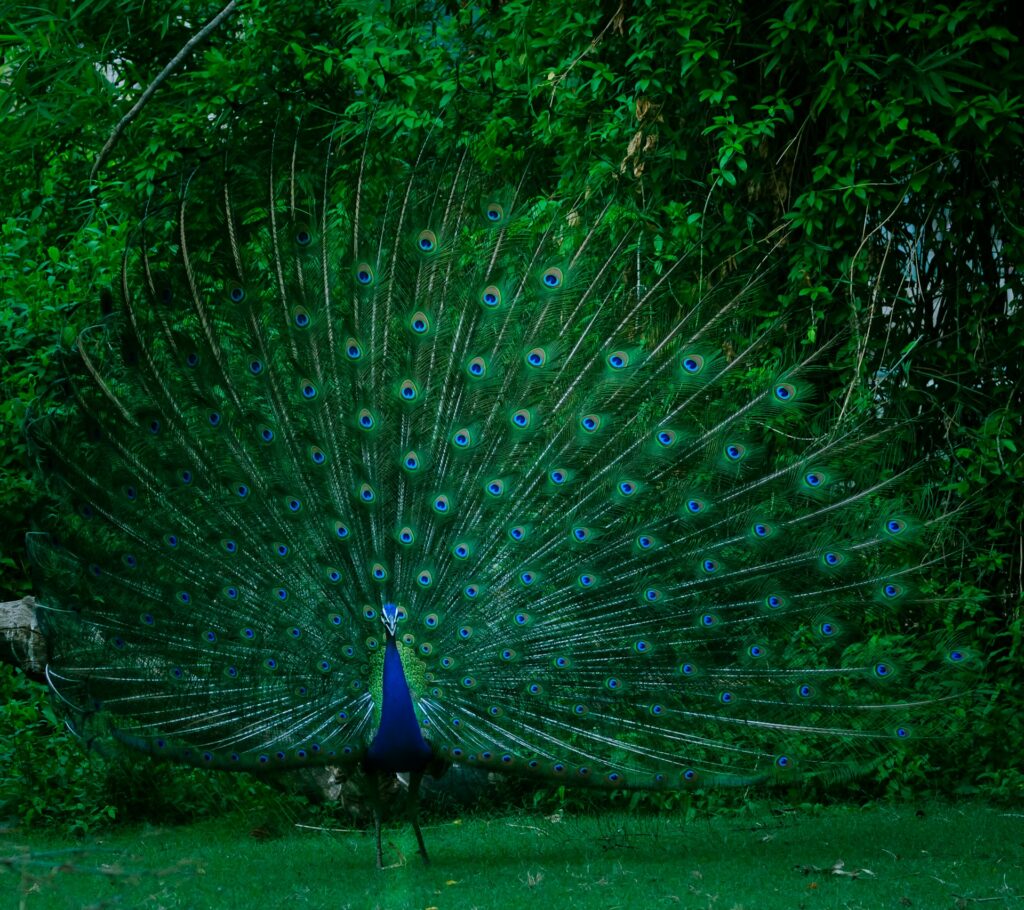
No list like this would be complete without the peacock. His massive, shimmering tail fan is a visual overload—bright, patterned, and impossible to ignore. But it’s not just about colour. The way he moves, the angle he holds his feathers, and even the rattling sound he makes all play a role. Females are drawn to symmetry, richness of colour, and how effortlessly he carries it all. It’s confidence, theatre, and biology rolled into one—and there’s no subtlety about it. Imagine if dating apps let you unfurl a six-foot display like that. No swiping needed.
Dolphins bring gifts—sometimes from the seafloor, sometimes from shipwrecks.
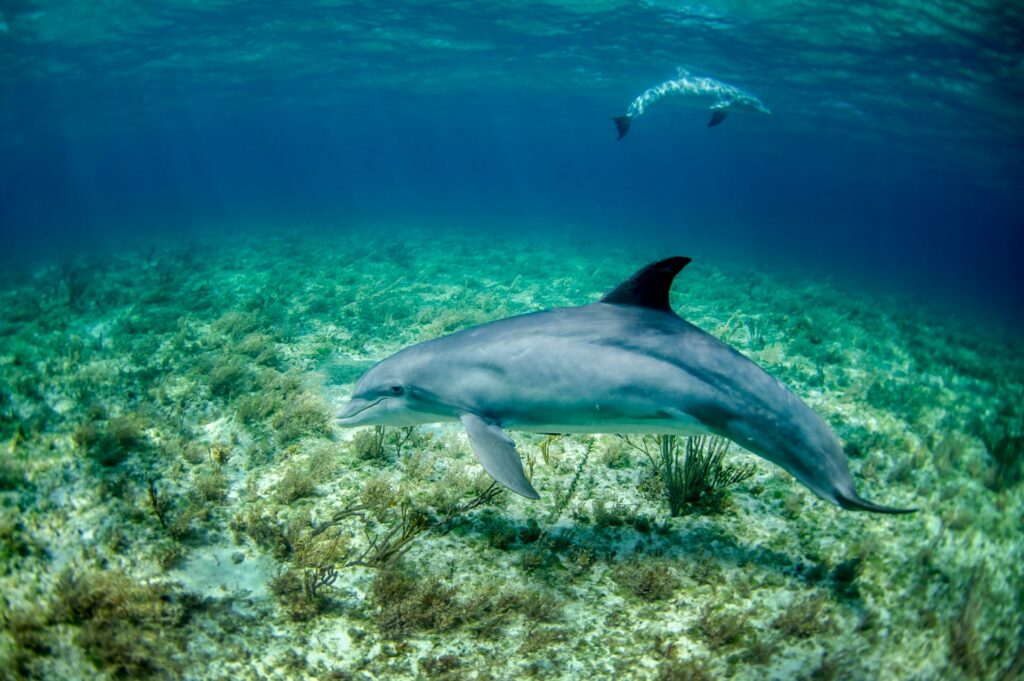
Male dolphins, especially in parts of Australia, have been seen presenting sea sponges, bits of coral, and even discarded human items like plastic bottles to impress female dolphins. It’s part of a larger routine that can include synchronised swimming, leaps, and sounds. What makes this so interesting is the idea of offering something unusual as a token. It’s not about food—it’s about originality. It’s less “I caught this for you” and more “look what I found and thought was cool.” A bit like someone picking up a vintage record on your first date—if your date happened to be underwater.
Frigatebirds inflate bright red throat pouches like balloons.
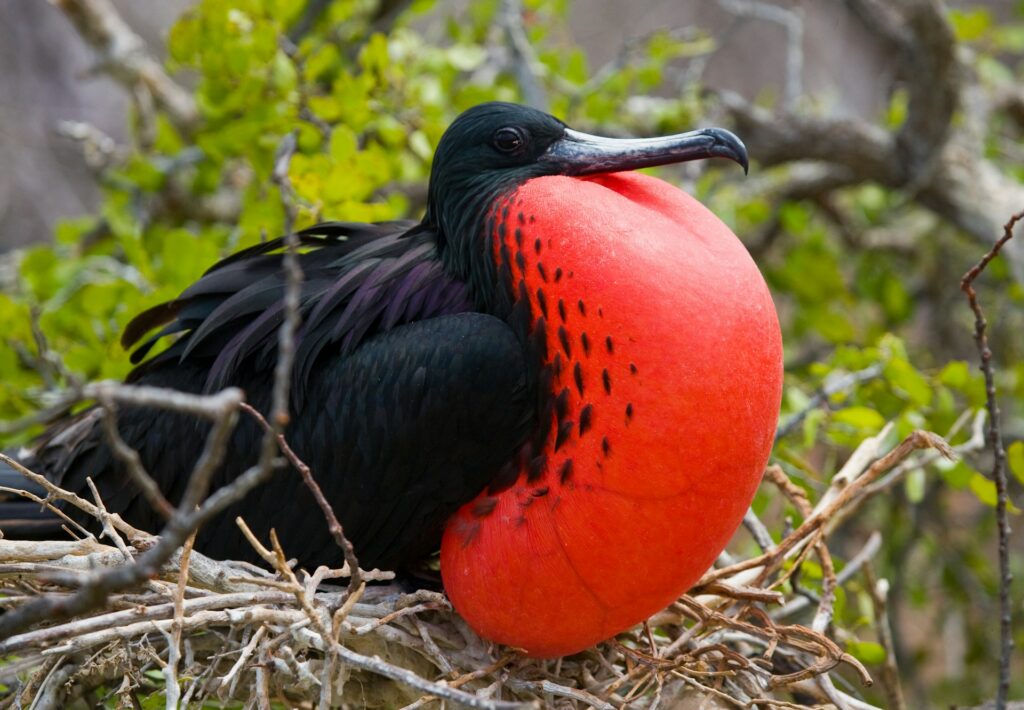
When it’s mating season, male frigatebirds turn into full-blown showpieces—literally. They puff up a huge red pouch under their beak until it looks like they’ve swallowed a beach ball. Then they sit in groups, making drumming sounds and vibrating their wings to get attention. Females fly overhead, scanning the crowd for the biggest, brightest, puffiest pouch. It’s all a bit theatrical and strangely competitive—but undeniably eye-catching. You’ve got to admire that level of dedication, even if it’s a bit impractical at the office.
Manakins moonwalk across branches.
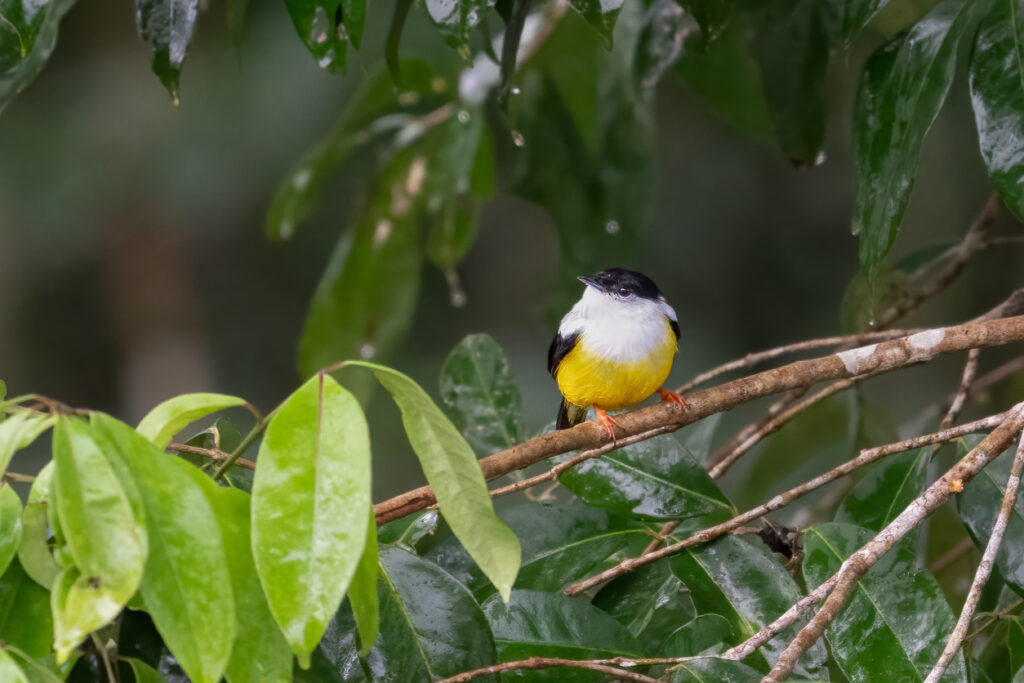
Tiny birds with big moves, manakins take showing off to a new level. Males from some species perform fast, flashy dances across thin branches, complete with hops, shimmies, and even moonwalks. It’s not just random flailing—it’s precise, rehearsed movement designed to impress watching females. Some of them even make rhythmic sounds by snapping their wings at lightning speed. They don’t sing, they dance. If humans did this sort of thing in real life, dancefloors would be a lot more fun—and probably a bit more competitive too.
Elephant seals fight for the right to be seen.
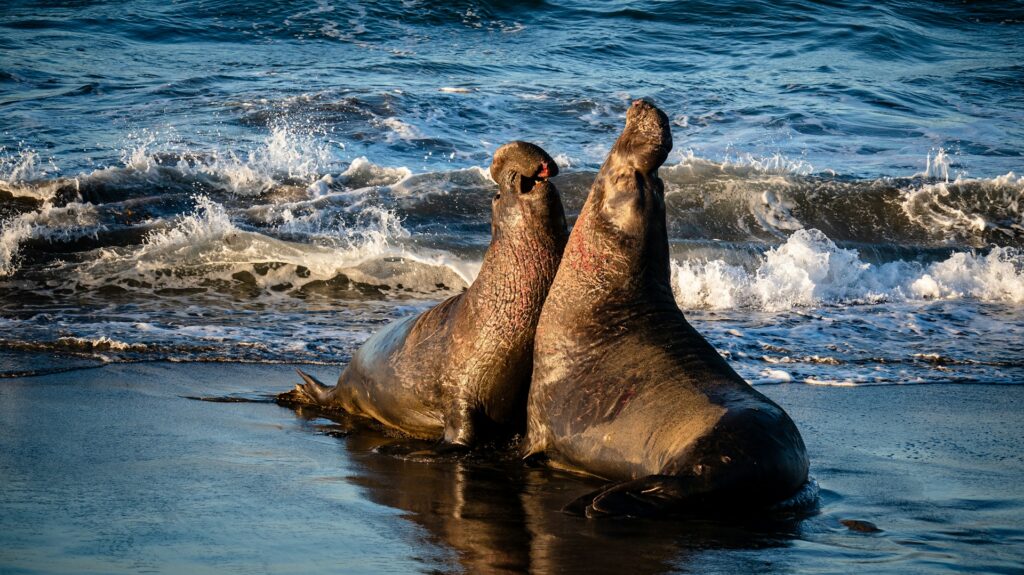
It’s not always about grace or creativity—sometimes, it’s about brute strength. Male elephant seals battle each other in dramatic, noisy fights for control of a stretch of beach—and the chance to mate with the females who gather there. The bigger the male, the better the odds. Winners get a kind of monopoly over the group for a period of time. It’s rough, loud, and short-lived. But it works. If humans operated like this, the gym would be a very different place.
Great crested grebes perform romantic mirror dances.
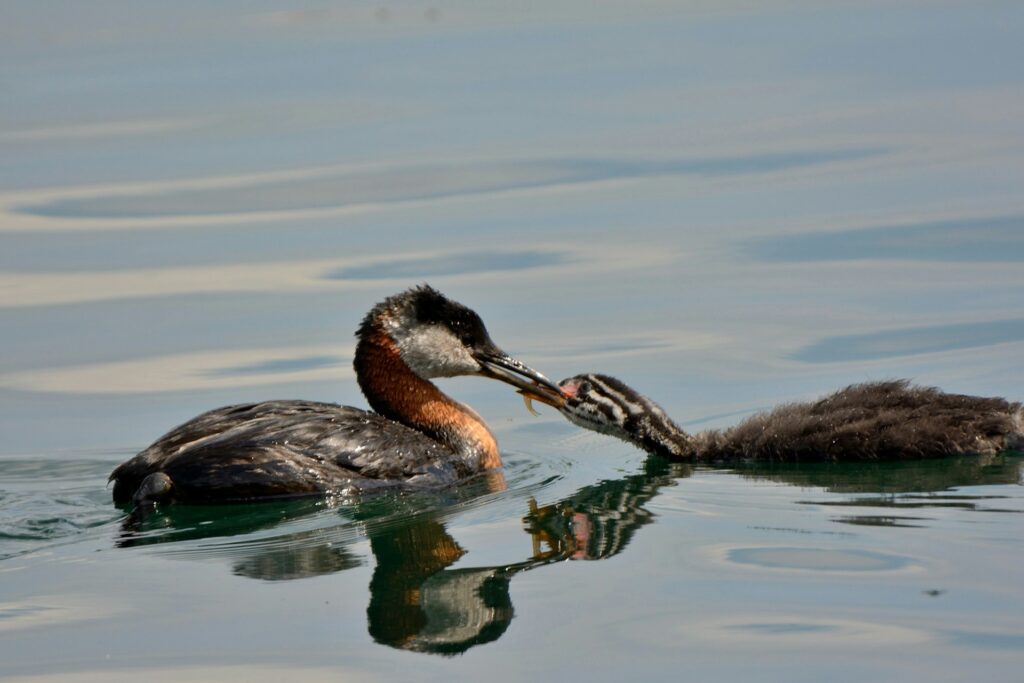
These elegant water birds put on a courtship dance that’s more ballet than battle. Two grebes will face each other, copy each other’s movements, shake their heads side to side, and even offer each other water plants like a bouquet. At one point, they rise up out of the water, chest to chest, paddling furiously as if dancing on the surface. It’s tender, graceful, and oddly human. Honestly, it’s probably more effort than most wedding proposals.
Pufferfish create underwater crop circles.
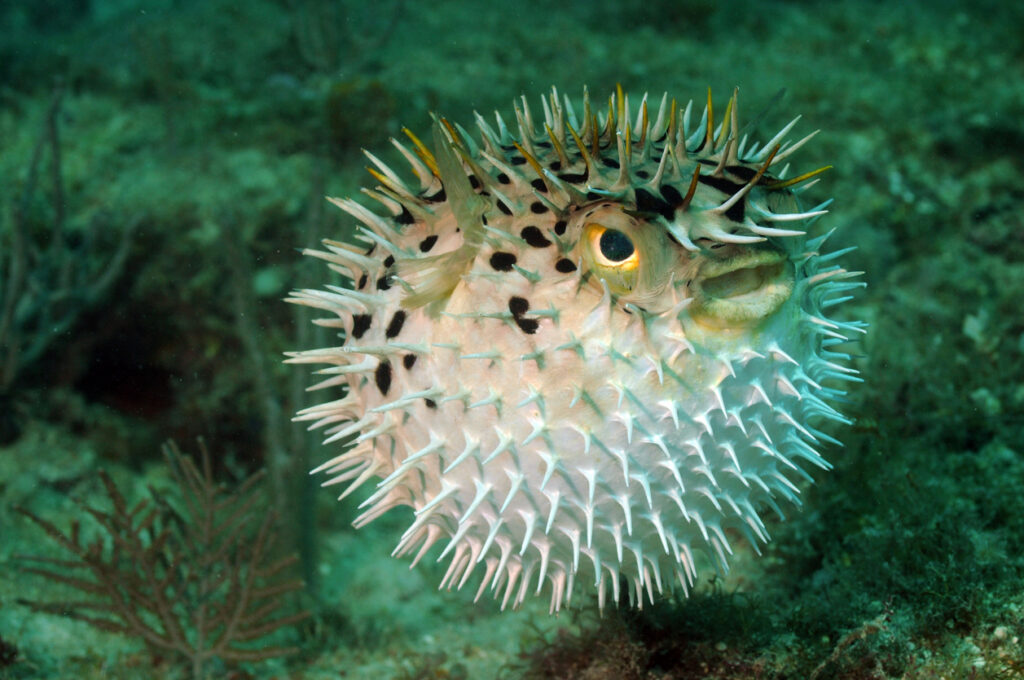
In the waters around Japan, male pufferfish spend days—sometimes over a week—creating elaborate circular patterns on the seafloor, using just their fins. The designs can be over six feet wide, perfectly symmetrical, and decorated with shells and stones. These underwater “crop circles” are used to attract mates, with females laying their eggs in the centre if they’re impressed. The better the circle, the better the chances. No flashy dance, no loud calls—just quiet, repetitive effort and a bit of artistic flair.
Sage grouse puff and pop on open plains.
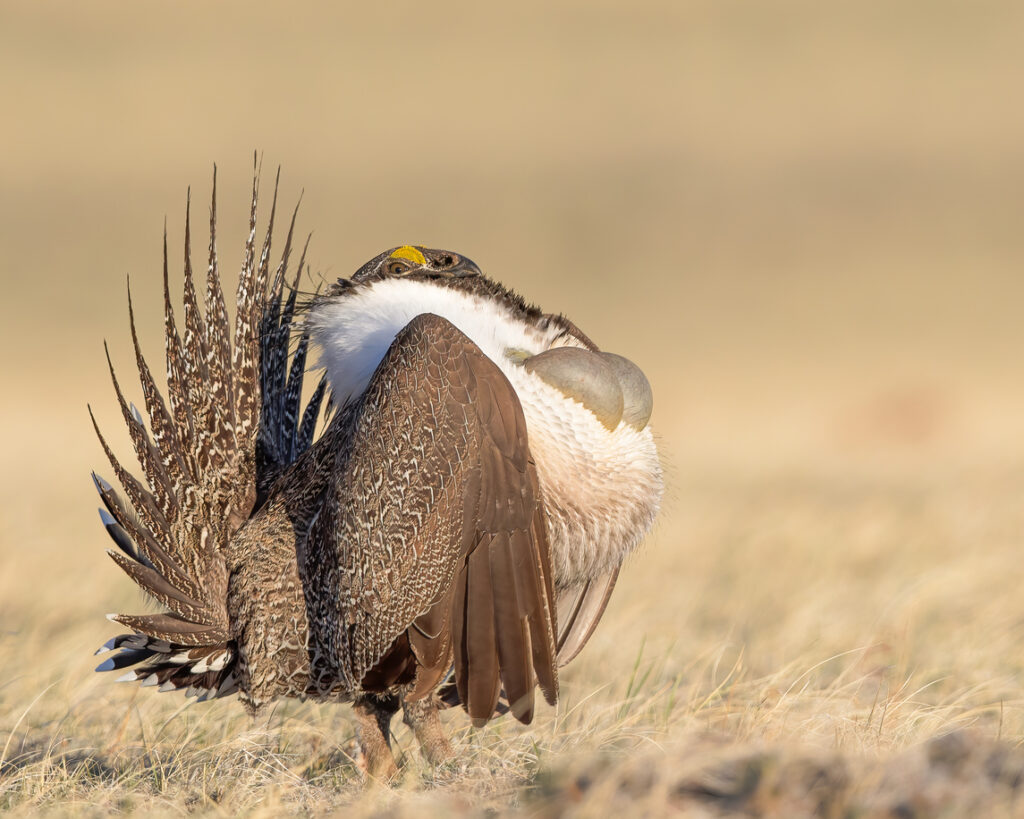
In parts of North America, male sage grouse gather in groups on wide-open land to perform a kind of collective display. They puff up their chests, inflate two yellow air sacs, and make a loud popping noise while strutting and fanning their tail feathers. It’s not exactly subtle—but the females watch and choose their favourites based on size, confidence, and technique. It’s part dance, part vocal performance, and completely unapologetic. You can’t half-do it. You’re either all in, or you’re background noise.
Jumping spiders do full-body dance routines with flair.
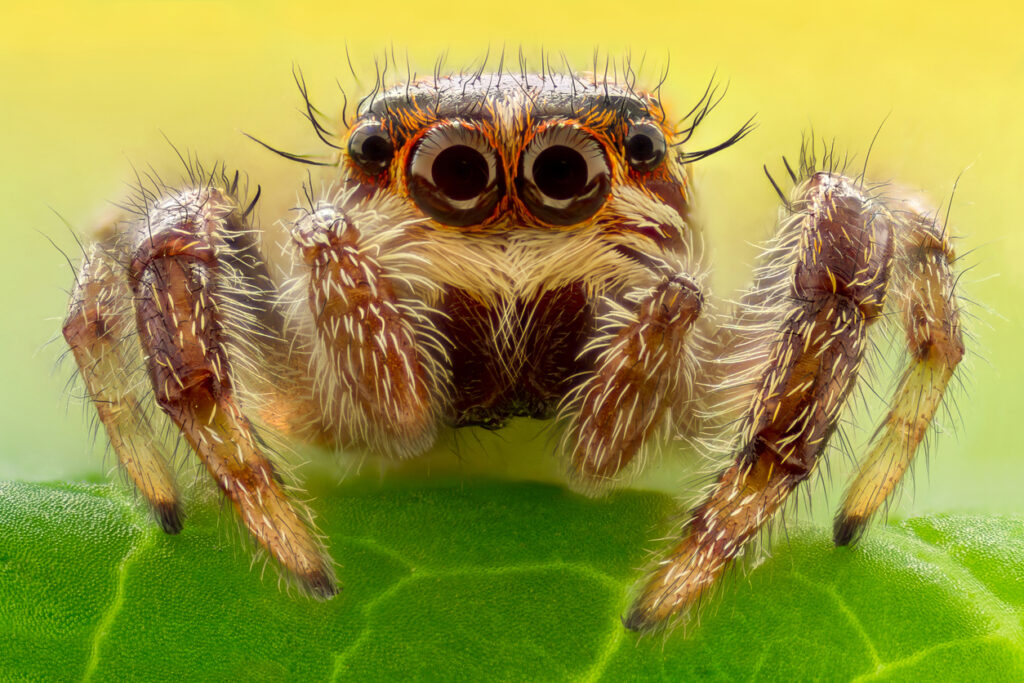
Jumping spiders might be tiny, but their routines are bold. Males perform complex courtship dances with arm-waving, leg-jiggling, and full-body wobbles, sometimes adding in vibrations that travel through the surface they’re standing on. Each movement is deliberate, and if the female likes what she sees, she’ll let him approach. If not? She might eat him. So it’s high stakes. Imagine dating with that level of risk—if you don’t impress, you don’t just get ghosted.
Satin bowerbirds steal and curate the perfect shade of blue.

Yes, this is the second bowerbird on the list—but satin bowerbirds deserve a separate mention. These birds are so obsessed with the colour blue that they collect anything they can find in the right shade: berries, bottle tops, pen lids, even plastic straws. They place their treasures around the entrance of their bower, adjusting angles and positions until it’s just right. What’s fascinating is that they seem to understand which visual tricks create perspective, making the whole thing look even more impressive from a female’s point of view. It’s basically visual marketing. In bird form.
Fireflies coordinate light shows to get noticed.
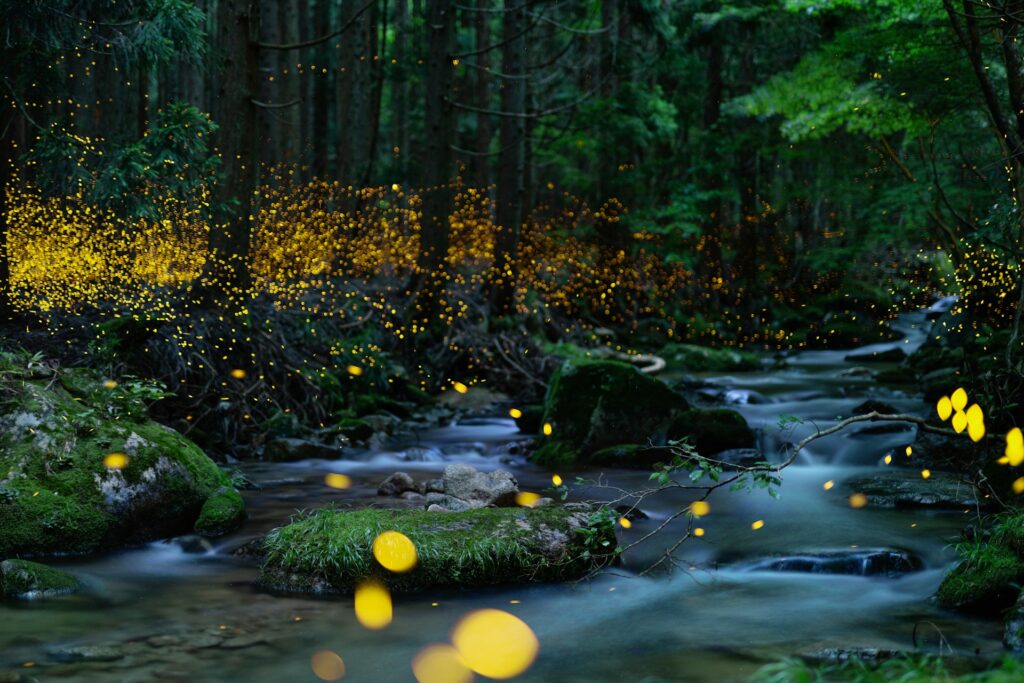
Male fireflies use light signals to attract females—but in some parts of the world, entire groups will flash in sync, creating a sparkling, coordinated display across trees and fields. It’s romantic in the most literal sense. Females flash back if they’re interested, starting a glowing conversation in the dark. There’s no need for noise, scent, or physical bravado—just timing, rhythm, and a soft glow that says “I see you.” If humans had this option, we’d never have to suffer through small talk again.